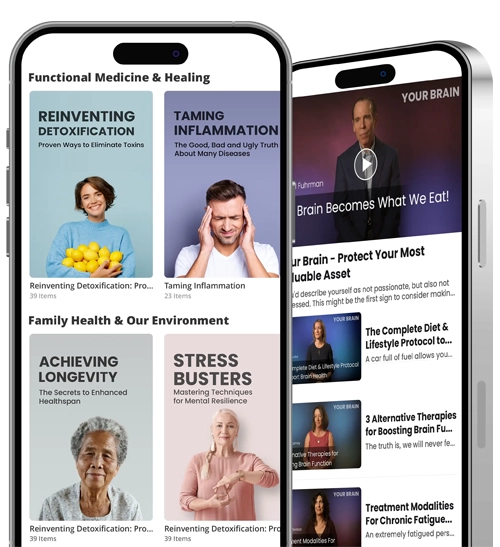Can Antibiotics Negatively Affect Your Children’s Health? The Answer Will Shock You!
Home
 Blog
Blog
 Health
Health
 Organs & Systems
Organs & Systems
 Immune System
Immune System
 Can Antibiotics Negatively Affect Your Children’s Health? The Answer Will Shock You!
Can Antibiotics Negatively Affect Your Children’s Health? The Answer Will Shock You!

Since the late 1800s, antibiotics have been used by doctors to treat a wide range of diseases and bacterial infections. In fact, they’re so prevalent that many people take antibiotics without realizing it.
Maybe you had a nasty acne breakout and needed doxycycline to help fight the P. acne bacteria. Or perhaps you developed an ear infection, pink eye, strep throat, or some other common condition that could be easily treated by antibiotics. STDs are definitely on the rise, with more than 1 million new cases every day [1]—most of which are managed or treated by antibiotics.
Antibiotics are so common they’re even given to children. They’re certainly effective enough for their use to be warranted in treating a number of conditions, but unfortunately, they can have some pretty nasty negative effects in the long term.
One study from 2014 [1] examined the effects of antibiotics on lab mice, specifically the way that the antibiotics affected their metabolic health. According to the research, “antibiotic exposure during a critical window of early development disrupts the bacterial landscape of the gut, home to trillions of diverse microbes, and permanently reprograms the body’s metabolism, setting up a predisposition to obesity.”
Wow, read that again: “permanently reprograms the body’s metabolism, setting up a predisposition to obesity.” That is definitely not something a parent wants to hear regarding their child’s health!
This study was conducted on animals, but a 2020 study [2] looked at more long-term consequences of antibiotics specifically on children. They collected data from more than 14,500 Minnesota children, 70% of whom were given antibiotics during the first two years of their lives. The antibiotics were chiefly used to treat ear infections or respiratory infections, but the consequences went far beyond just getting rid of the harmful bacteria.
Because of the exposure to antibiotics, the children were more likely to develop:
- Immunological diseases, including hay fever, food allergies, and childhood-onset asthma
- Metabolic diseases, including being overweight and obesity
- Cognitive conditions and disorders, including ADHD and autism
The effects varied by medication, but across the board, exposure to antibiotics were proven to lead to some negative long-term consequences.
Take a moment to let that sink in. You’re giving your children antibiotics with the intention of curing a condition or health problem, but by doing so, you could be causing more health problems down the road.
In fact, the more courses of antibiotics administered and the earlier in life the children receive them (as early as 6 months!), the higher the risk. The 2014 study actually found that antibiotics given to pregnant and nursing mothers caused higher obesity rates among their children.
That’s a pretty clear indication that antibiotics are something to treat with a great deal of respect and caution, especially for children!
You might be wondering, “Well what do I do, then? My child is sick/has an infection, and if I can’t give them antibiotics, what can I do?”
Simple: use natural antibiotics.
Get FREE Access!
We are on a mission to change your life by providing you with curated science-backed health tips, nutrition advice and mouth-watering recipes. Sign up to receive your 3 starter gifts and get exclusive access to new weekly content for FREE:

Free eBook
to boost metabolism

4 Shopping Guides
for every diet

22 Free Recipes
to beat sugar addiction
 Subscribe now
Subscribe now
Yes, before modern medicine ever discovered penicillin, Mother Nature made sure we had plenty of bacteria-killing natural antibiotics available right at our fingertips.
A few natural antibiotics include:
Honey – Honey is one of the oldest anti-bacterial remedies in the world. It has been used for millennia as an ointment to both accelerate wound healing and ward off bacteria. Research has proven that it’s effective at killing off more than 60 different types of bacteria [3], even drug-resistant bacteria.
Echinacea – Echinacea is an herbal ingredient used by Native American healers for centuries, both to treat wounds and combat inflammation. It’s capable of killing off a wide range of bacteria, including strep throat bacteria and necrotizing fasciitis.
Cloves – Got oral bacteria? Chew on cloves or drink clove water, and the potent antioxidants in the powerful spice will do wonders to kill off the bacteria.
Garlic – Garlic is a potent anti-bacterial agent, capable of helping to eradicate both E.coli and Salmonella bacteria. It’s even effective against some multi-drug-resistant bacteria, such as tuberculosis.
Ginger – For those with upper respiratory tract infections (both viral and bacterial), ginger can be a game-changing natural antibiotic. It can fight a wide range of bacteria [4], reduce nausea, and help lower blood sugar levels.
Goldenseal – Goldenseal is nature’s UTI-treating antibiotic, and is highly effective against bacterial diarrhea and skin infections.
I want to make it clear that I am not a doctor, and this is certainly not medical advice. If you or your child are sick, you should definitely see a medical professional for treatment.
There’re definitely times when antibiotics can be a lifesaver in certain situations. But before you instinctively reach for antibiotics next time you or your child is experiencing a few symptoms, you might want to consider first one of the natural antibacterial remedies listed above. Your risk of long-term health problems will be much lower thanks to your avoidance of commonly prescribed antibiotics.
Resources:
[1] https://www.who.int/news-room/fact-sheets/detail/sexually-transmitted-infections-(stis)
[2] https://www.sciencedaily.com/releases/2020/11/201116075732.htm
[3] https://www.sciencedaily.com/releases/2014/08/140814123426.htm
[4] https://www.ncbi.nlm.nih.gov/pmc/articles/PMC3609166/

We created ZONIA because we believe that everyone deserves to be empowered with the education and tools to be healthy and happy. Zonia's original videos and personalized transformation programs by our health & wellness experts will help you achieve this mission. Click on the button below to get started today:






